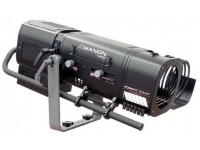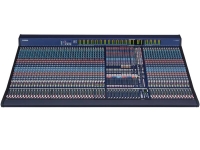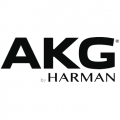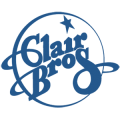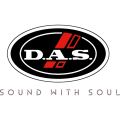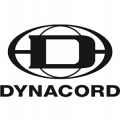ABOUT THE PRODUCT
ABOUT THE MANUFACTURER
GLOSSARY
PM5000
The Pinnacle of the PM Series
In the 30 years or so that have elapsed since the field of "sound reinforcement" began to evolve from the simple PA systems that were the norm throughout the 60`s and early 70`s, Yamaha has made significant strides forward. The very first PM console, introduced way back in `72, was a front-line contender in the field with superior performance and features. The PM1000 and then the PM2000 set new standards of quality. The PM4000 became the de-facto industry standard. Each new model in the PM series has traditionally built upon and augmented the strengths of its predecessor, adding new features and functionality that became the templates that others would follow - the matrix mix system introduced on the PM1000 and the PM3000`s VCAs are perfect examples. In a sense, Yamaha has led the field of modern console design and production all the way. The same can be said of the incredible PM1D all-digital console, which has essentially defined the role of digital technology in sound reinforcement for the foreseeable future. The evolution continues to this day. The PM5000 is simply the most advanced analog sound reinforcement console in its class. It is a "pure analog" console in the audio sense, and it borrows freely from the world of digital technology to give you unprecedented control flexibility and efficiency. The PM5000 is the culmination of Yamaha`s extensive experience and expertise in many areas - professional console design and production, control interface design, and of course sound itself. There`s really only one choice if you need the best in terms of capacity, versatility, reliability, and most importantly, unmatched sound quality: the Yamaha PM5000.
Uncompromised Sound Quality You`d Expect from the PM Series and More
The PM5000 takes the legendary sound quality of the PM-series consoles to a new level. To achieve this unprecedented quality Yamaha engineers focused on pushing the three main ingredients of sound quality to their limits: reproduction accuracy, signal-to-noise ratio, and crosstalk. This required some in-depth research into circuit topology, parts selection, and grounding, as well as redevelopment of the critical microphone preamplifier, equalizer, and VCA circuits. The result is that the PM5000 is simply the ultimate analog console, delivering sound that sets a towering new standard.
Fully-equipped Input Channels
The PM5000`s mono input channels include a phantom power switch, 26-dB pad, 50-dB continuous trim, phase switch, 12-dB/octave variable-frequency HPF, four-band fully-parametric EQ with shelving mode switchable for the HI and LOW bands, EQ on/off switch, and insert I/O patch points that can be switched to pre-EQ or post-EQ. LCR panning using the console`s mono bus for the center channel is also provided. A CSR (Center-Side Ratio) control can be used to adjust the proportion between hard and phantom centers for LCR panning. Stereo input modules don`t include LCR panning, but include an L+R switch in addition to the other functions listed above.
35-bus Configuration Covers Both FOH and Monitor Applications
Making a significant departure from conventional console bus setups, the PM5000 provides 35 buses configured as 12 stereo auxiliary buses, eight group/auxiliary buses, a stereo bus, and a mono (center) bus. The group/auxiliary buses can be switched between group and auxiliary operation in two-bus groups. This structure allows the PM5000 to function as a front-of-house console with 12 stereo auxiliary buses and 8 group buses, or as a monitor console with 32 auxiliary buses (12 stereo and 8 mono). When used as group buses, the group/auxiliary buses can be switched to post-pan or pre-pan operation. The L+R switches allow the stereo auxiliary buses to be used as mono auxiliary buses as required.
12 VCAs and a 4-stereo + 8-mono Matrix
In addition to an ample supply of buses, the PM5000 features 12 VCA groups. The VCA groups can be cascade-connected to another PM5000, or to a PM4000 or PM3500 for convenient system expansion.* 12 matrix channels (4 stereo and 8 mono) can be used with all 35 buses, providing a total of 16 individual matrix outputs that will fulfill the multi-output requirements of even large-scale concert systems. * VCA groups 1 through 8 can be cascaded with a PM4000 or PM3500.
A Choice of Three Models
The PM5000 is available in three configurations: the PM5000-52C with 52 channels (48 mono + 4 stereo) and a center-master layout, or the PM5000-36 and PM5000-28 with 36 (32 mono + 4 stereo) and 28 (24 mono + 4 stereo) channels, respectively, and a right-master layout.
Quiet, Dependable Power Supply
The PM5000`s dedicated PW5000 power supply unit includes a transformer-based supply with more than enough capacity to drive the console`s audio circuitry, and an independent switching power supply for the digital control circuitry and relays. Significantly enhanced drive capacity means that the power supply remains stable and reliable over a wide range of temperatures, and a low-speed fan keeps the power circuitry within thermal specifications even under difficult ambient conditions. Redundant failsafe power supply operation is supported without the need for a separate switching unit.
Easy-access Panel Layout with Logical Color Scheme
In spite of its large capacity and many control functions, the PM5000`s panel layout and color scheme make it remarkably easy and intuitive to operate. The basic color scheme is carried over from the previous PM-series models, so engineers who have worked with other PM consoles will feel right at home. The finest details of control "feel" - right down to knob diameter and knurling - have been refined for positive, stress-free operation.
A Variable Summing Gain control is provided just before the master fader of each bus, providing an effective means to reduce overload at the summing amplifier prior to the master fader without having to reduce the levels of individual input faders or preamplifier gain controls. The Variable Summing Gain control can be adjusted to provide from 0 (bypass) to 20-dB of attenuation at the summing amp, allowing other level settings to be maintained for maximum mix flexibility as well as sound quality.
Digital Scene Storage and Recall
Although the PM5000 is an analog console and all audio is handled in the analog domain, scene storage and recall is handled digitally for up-to-date convenience in today`s complex entertainment applications. Up to 990 scenes contain a comprehensive range of on/off settings, assignments, and fader levels (refer to the table, below). Motor faders, illuminated switches and LED indicators make the recalled settings visually obvious. A recall safe function, developed on the basis of experience with the acclaimed digital PM1D console, is another feature that contributes to the PM5000`s practicality and reliability. Recall safe and fader safe keys are located beside the faders for easy access and visual confirmation of safe status. Scene data and basic console settings can be stored to compact Flash memory media for convenient data storage and portability.
Professional used lighting equipment.| Professional second hand lighting equipment.| Professional pre owned lighting equipment.
Professional used audio equipment.| Professional second hand audio equipment.| Professional pre owned audio equipment.
Second hand audio gear. | Second hand lighting.
Pro audio equipment, second hand amplifiers, DJ, second hand sound systems, second hand Microphones, second hand Media Players.
Outdoor & Indoor LED screens for sale, LED mobile truck.
Light trussing, Gebrauchte Veranstaltungstechnik, used stage equipment Stage & Theatre lighting products.
Used Yamaha Pro Audio
Yamaha Pro Audio, Inc. is a company which is part of the Yamaha Corporation group. It offers a complete line of beginner professional audio products for the live sound and sound reinforcement markets. It has a long history of introducing significant products for the professional audio market such as the PM-1000 modular mixing console, the REV1 and SPX90 digital signal processors, and the 01, 02R, PM1D, PM5D, QL5, M7CL, CL5, and PM10/7 Rivage digital mixing consoles.
Yamaha products have received the most nominations in the area of technical achievement in the TEC Foundation TEC Awards 20-year history.
The first PM mixer manufactured by Yamaha was the PM200. Introduced in 1972, it was a monaural mixer with unbalanced inputs and outputs.
The PM400 was an upgraded mixer with a stereo bus and balanced inputs and outputs.The Yamaha PM1000 mixing console was a significant product in the professional audio industry because of its many advanced features and reasonable price. Introduced in 1974 it incorporated many innovative features such as a modular design using channel strips and output strips, a 4 bus design, and an output matrix mixer. Because it was manufactured by an established company it was readily accepted in many audio industries including sound reinforcement, recording, and audio for video. It also established a reputation for being rugged in the often abusive environment of touring sound reinforcement.
The PM2000 featured a hard chassis construction for rigidity and durability on the road. "One of the tests we are still using is our 'flight case test'. During prototyping we order a custom flight case - not even a very sturdy one - and place the console in it. The flight case is stood on end, and then tipped over in both directions and allowed to fall to the floor. If the console powers up immediately and works flawless after that ordeal, then it passes the test." The PM3000 was the first mixer to use voltage-controlled amplifiers (VCAs) in a mixer designed specifically for sound reinforcement. It used a custom VCA design using discrete hybrid ICs The PM4000 introduced stereo auxiliary buses and fully parametric Equalization on the input channels.
The PM5000 was a hybrid analog mixer with a digital control system which provided scene recall. In 1999, Yamaha debuted a first of its kind, all digital large format console, The PM1D system. With scalable I/O configuration the total channel count could be brought up to 320 mic inputs. Though, to achieve this impressive channel count, the system required multiple modular I/O boxes along with separate Digital Signal Processor(DSP) racks, power supply racks, and computer system engines.
Yamaha's next desk, the PM5D did away with the external rack system, reducing the channel count to 48 mic pres, and requiring only an external power supply unit. The Yamaha PM5D-RH(remote head-amp) was all of the functionality of a PM5D in a 10 space rack that only required a PM5D-RH control surface. In 2007, Yamaha won a Technical Grammy for its NS-10 studio monitor, a speaker that dominated the mixing of pop and rock music throughout the world for at least 20 years. The speaker was inducted into the Mix magazine TECnology Hall of Fame in 2008. The M7CL and its successor, the CL series are both among Yamaha's more affordable line. The CL Series was first to incorporate the Dante protocol. In 2014, Yamaha announced the release of a new PM series digital console, the PM10 Rivage system, equipped with Rupert Neve Designed "Silk" modeling pre-amps.
Professional used lighting equipment.| Professional second hand lighting equipment.| Professional pre owned lighting equipment.
Professional used audio equipment.| Professional second hand audio equipment.| Professional pre owned audio equipment.
Second hand audio gear. | Second hand lighting.
Pro audio equipment, second hand amplifiers, DJ, second hand sound systems, second hand Microphones, second hand Media Players.
Outdoor & Indoor LED screens for sale, LED mobile truck.
Light trussing, Gebrauchte Veranstaltungstechnik, used stage equipment Stage & Theatre lighting products.
Active: Powered. An active crossover is electrically powered and divides the line-level signal prior to amplification. An active speaker includes an active crossover and built-in amplifier.
Actuality: Audio from an announcer speaking.
Amplifier: A component that increases the gain or level of an audio signal.
Balanced Input: A connection with three conductors: two identical signal conductors that are 180 degrees out of phase with each other, and one ground. This type of connection is very resistant to line noise.
Bandpass: A two-part filter that cuts both higher and lower frequencies around a center band. A bandpass enclosure cuts high frequencies by acoustic cancellation and low frequencies by natural physical limitations on bass response.
Bandwidth: In audio, the range of frequencies a device operates within. In video, the range of frequencies passed from the input to the output. Bandwidth can also refer to the transmission capacity of an electronic communications device or system the speed of data transfer,is very important when planning a meeting for the attendees to stay connected.
Bass: Low frequencies those below approximately 200 Hz.
Bi-Wiring: A method of connecting an amplifier or receiver to a speaker in which separate wires are run between the amp and the woofer and the amp and the tweeter.
Boost: To increase, make louder or brighter opposite of attenuate.
Bridging: Combining two channels of an amplifier to make one channel that more powerful. One channel amplifies the positive portion of an audio signal and the other channel amplifies the negative portion, which are then combined at the output.
CD: Compact Disc. Ubiquitous digital audio format. Uses 16-bit/44.1-kHz sampling rate PCM digital signal to encode roughly 74 or 80 minutes of two- channel, full-range audio onto a 5-inch disc.
CD-R: Recordable Compact Disc.
CD-RW: Rewritable Compact Disc.
Channel: In components and systems, a channel is a separate signal path. A four-channel amplifier has at least four separate inputs and four separate outputs.
Coloration: Any change in the character of sound (such as an overemphasis on certain tones) that reduces naturalness.
Crossover: A component that divides an audio signal into two or more ranges by frequency, sending, for example, low frequencies to one output and high frequencies to another. An active crossover is powered and divides the line-level audio signal prior to amplification. A passive crossover uses no external power supply and may be used either at line level or, more commonly, at speaker level to divide the signal after amplification and send the low frequencies to the woofer and the high frequencies to the tweeter.
Crossover Frequency: The frequency at which an audio signal is divided. 80 Hz is a typical subwoofer crossover point and is the recommended crossover point in theatrical and home THX systems. Frequencies below 80 Hz are sent to the subwoofer signals above 80 Hz are sent to the main speakers.
Cut: To reduce, lower opposite of boost.
Decibel (dB): A logarithmic measurement unit that describes a sound`s relative loudness, though it can also be used to describe the relative difference between two power levels. A decibel is one tenth of a Bel. In sound, decibels generally measure a scale from 0 (the threshold of hearing) to 120-140 dB (the threshold of pain). A 3dB difference equates to a doubling of power. A 10dB difference is required to double the subjective volume. A 1dB difference over a broad frequency range is noticeable to most people, while a 0.2dB difference can affect the subjective impression of a sound.
Delay: The time difference between a sonic event and its perception at the listening position (sound traveling through space is delayed according to the distance it travels). People perceive spaciousness by the delay between the arrival of direct and reflected sound (larger spaces cause longer delays.
Diaphragm: The part of a dynamic loudspeaker attached to the voice coil that produces sound. It usually has the shape of a cone or dome.
Diffusion: In audio, the scattering of sound waves, reducing the sense of localization. In video, the scattering of light waves, reducing hot spotting, as in a diffusion screen.
Digital Audio Server: Essentially a hard drive, a digital audio server stores compressed audio files (like MP3 or WMA). Most include the processing to make the files, and all have the ability to play them back.
Direct-Stream Digital: A format for encoding high-resolution audio signals. It uses a 1-bit encoder with a sampling rate of 2,822,400 samples per second (verses 44,100 for CD). Used to encode six high-resolution channels on SACD.
Dispersion: The spread of sound over a wide area.
Distortion: Any undesired change in an audio signal between input and the output.
DNR: Dynamic Noise Reduction. A signal-processing circuit that attempts to reduce the level of high-frequency noise. Unlike Dolby NR, DNR doesn't require preprocessing during recording.
Dolby B: A noise-reduction system that increases the level of high frequencies during recording and decreases them during playback.
Dolby C: An improvement on Dolby B that provides about twice as much noise reduction.
Dolby Digital: An encoding system that digitally compresses up to 5.1 discrete channels of audio (left front, center, right front, left surround, right surround, and LFE) into a single bitstream, which can be recorded onto a DVD, HDTV broadcast, or other form of digital media. When RF-modulated, it was included on some laser discs, which requires an RF-demodulator before the signal can be decoded. Five channels are full-range the .1 channel is a band-limited LFE track. A Dolby Digital processor (found in most new receivers, preamps, and some DVD players) can decode this signal back into the 5.1 separate channels. Most films since 1992`s Batman Returns have been recorded in a 5.1 digital format, though a number of films before that had 6-channel analog tracks that have been remastered into 5.1.
Dolby EX: An enhancement to Dolby Digital that adds a surround back channel to 5.1 soundtracks. The sixth channel is matrixed from the left and right surround channels. Often referred to as 6.1. Sometimes referred to as 7.1 if the system uses two surround back speakers, even though both speakers reproduce the same signal. Software is backwards-compatible with 5.1 systems, but requires an EX or 6.1 processor to obtain additional benefit.
Dolby Pro Logic: An enhancement of the Dolby Surround decoding process. Pro Logic decoders derive left, center, right, and a mono surround channel from two-channel Dolby Surround encoded material via matrix techniques.
Dolby Pro Logic II: An enhanced version of Pro Logic. Adds improved decoding for two-channel, non-encoded soundtracks and music.
Driver: A speaker without an enclosure also refers to the active element of a speaker system that creates compressions and rarefactions in the air.
DSP: Digital Signal Processing. Manipulating an audio signal digitally to create various possible effects at the output. Often refers to artificially generated surround effects derived from and applied to two-channel sources.
DTS: Digital Theater Systems. A digital sound recording format, originally developed for theatrical film soundtracks, starting with Jurassic Park. Records 5.1 discrete channels of audio onto a handful of laser discs, CDs, and DVDs. Requires a player with DTS output connected to a DTS processor.
DTS ES: An enhanced version of the 5.1 DTS system. Like Dolby's Surround EX, a sixth channel is added. In some cases (DTS ES Discrete), the sixth channel is discrete. Software is backwards-compatible with 5.1 systems, but requires an ES or 6.1 processor to obtain additional benefit. Neo: 6 is a subset of DTS ES that creates 6.1 from material with fewer original channels.
Dynamic Range: The difference between the lowest and the highest levels in audio, it&'s often expressed in decibels. In video, it's listed as the contrast ratio.
Professional used lighting equipment.| Professional second hand lighting equipment.| Professional pre owned lighting equipment.
Professional used audio equipment.| Professional second hand audio equipment.| Professional pre owned audio equipment.
Second hand audio gear. | Second hand lighting.
Pro audio equipment, second hand amplifiers, DJ, second hand sound systems, second hand Microphones, second hand Media Players.
Outdoor & Indoor LED screens for sale, LED mobile truck.
Light trussing, Gebrauchte Veranstaltungstechnik, used stage equipment Stage & Theatre lighting products.

